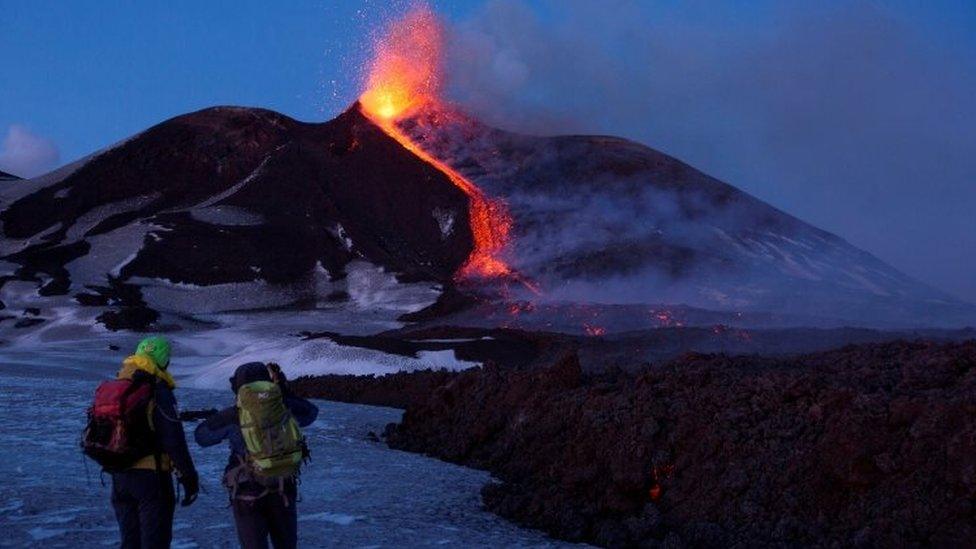Mount Etna erupts in Sicily amid dozens of tremors
- Published

Lava and smoke could be seen on Etna on Monday
Europe's most active volcano, Mount Etna in Sicily, erupted on Monday, with officials reporting more than 130 earthquakes of up to 4.3 in magnitude.
The Mount Etna observatory said lava had spewed from a new fracture near its south-eastern crater.
A local volcanologist said it was Etna's "first flank eruption" in more than a decade.
Volcanic ash covered nearby villages, while planes into Catania airport had to be halted temporarily.
A large explosion was felt close to Etna during the morning.
A video filmed 2,500m (8,200 ft) up the 3,350m volcano showed the fast spread of ash. People on the mountainside were told to escape quickly.
Allow Facebook content?
This article contains content provided by Facebook. We ask for your permission before anything is loaded, as they may be using cookies and other technologies. You may want to read and before accepting. To view this content choose ÔÇÿaccept and continueÔÇÖ.
Catania airport said later that the airspace had been reopened to allow four planes to land per hour, before confirming it would return to normal operation by 20:00 local time (19:00 GMT).
Allow Twitter content?
This article contains content provided by Twitter. We ask for your permission before anything is loaded, as they may be using cookies and other technologies. You may want to read and before accepting. To view this content choose ÔÇÿaccept and continueÔÇÖ.
Italy's INGV volcanology institute said that during a three-hour period from 08:50 (07:50 GMT) on Monday more than 130 earthquakes took place.
The biggest tremor of magnitude 4 was on the north-east side of Etna near Piano Pernicana, while another of similar magnitude was felt on the northern flank.
That was followed by intense eruptions from the volcano's new south-east crater.
Smoke billowed out throughout the day
Later on Monday, a magnitude-4.3 tremor was also recorded by officials - the strongest felt throughout the day.
Although Etna has seen frequent eruptions, the INGV said in August that the volcano had grown faster than ever before in recent years.
In March a UK-led team said that the whole structure of Europe's premier volcano was edging towards the sea at a rate of 14mm per year.
- Published16 March 2017
- Published24 March 2018